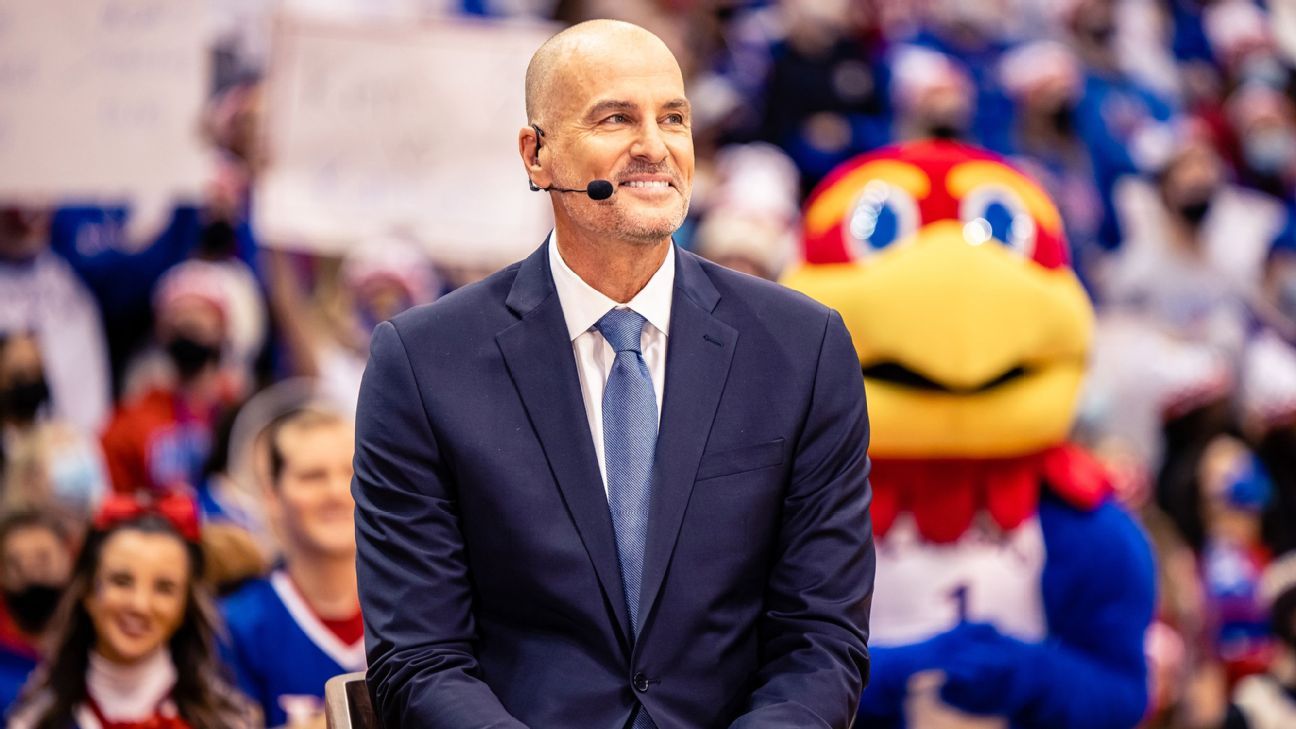Welcome to The Bilas Index, Vol. II, the most comprehensive and thorough compilation of basketball accomplishment, measured through analytics, on-court performance and the best predictive tools known to the universe. The Bilas Index is powered by the gray matter of The Bilastrator, unquestionably the finest hoops mind one can imagine. And humility is The Bilastrator’s best quality, among so many in contention. The Bilastrator’s basketball mind is undefeated, a Quad 1 brain if there ever was one.
One thing is clear from the 2022 season: No teams have separated from the crowd as Gonzaga and Baylor did last season. Instead, the game has an upper tier of title contenders, a group of eight. That is not to say that teams outside of the highest shelf of the game can’t break through to the Final Four, but the eventual champion will come from those eight. Each can lose early in the NCAA tournament, because every team in this year’s field can lose early. But the list of teams that can win six in a row in the tournament is not long.
The teams in the upper tier? Gonzaga, Auburn, Kentucky, Duke, UCLA, Arizona, Purdue and a healthy Baylor. Can those teams be beaten before reaching the Elite Eight? Yes, but those are the best teams this season.
Could Illinois and Kansas join that group? Perhaps, with a nod to Illinois as the likeliest team to crash the party. The race for the tournament bubble will be fascinating, as teams often surge late that are better than their records indicate. Will the late pushes of Virginia Tech, Virginia, Michigan, Rutgers, Memphis and Oregon be enough to get in? Will the West Coast Conference strength knock out some of the power conference teams?
The race for national player of the year is as tight as ever, with no clear favorite. Kentucky’s Oscar Tshiebwe feels like the leader, but names like Kofi Cockburn, Ochai Agbaji, Paolo Banchero, Johnny Davis, Keegan Murray, Jabari Smith, Jaden Ivey and Drew Timme will have a say. Yet that is not as interesting as the race for Big Ten Player of the Year, which has incredible depth of talent and accomplishment, almost all of the contenders frontcourt players. Amazing.
There is a lot to celebrate about the game this season, but …
Let me start this rant by saying I love basketball more than anything. When you love something you fight for what is best for it and acknowledge when it needs proper care. If you have a beautiful house you don’t ignore the repair and maintenance of that valuable asset because you wish to celebrate its positives. If there is a fire in one part of the house, you don’t say that the rest of the place is amazing, so why worry about that blaze elsewhere? You yell “FIRE!” and immediately address the danger it presents.
Well, we have a fire in college basketball, and it is spreading to the rest of our house. It is officiating. Not individual officials but the officiating of the game.
College basketball’s officiating problem is getting worse. Several years ago, the administrators of the game made great strides to reduce overt physicality and allow offenses to have freedom of movement without being fouled. But, some five years ago, scoring had reached an all-time low and the games were suffering as a result. A lot of work was done to ameliorate the problem, to have the games called by the rules as written. As a result of the work done in that area, the game got significantly better.
Well, all those gains have been given back and we now have hockey games in the major conferences, not basketball games. It is, in a word, depressing. This season, freedom of movement does not exist and the college game more closely resembles the NBA in the 1990s, a physical slugfest and fistfight every night.
Turn on any major conference game, and you will see arm bars on ball handlers not in the post, handchecking, bumping and chucking of cutters, illegally riding cutters and screeners off of their paths, and overt physicality in the post area, including a lack of enforcement of verticality on shooters. Whatever you see on the floor in major conferences this season is not basketball and would not be allowed in the NBA or FIBA. Hell, it would not be allowed in the NFL on wide receivers. It is wrong and needs to be seriously addressed. Coaches are confounded and complaining, and so are the bloviating gasbags who announce the games.
The most damning data point? Fouls called are at an all-time low this season. Given how ridiculously physical this game has become, that is impossible. Officials are either missing the fouls committed or ignoring them. And it is clearly the latter. Individual officials cannot and should not be blamed, as they are just doing what their bosses are allowing them to do. The fault lies with the administration of the game.
The product we see on the floor is the responsibility of NCAA national coordinator of officials J.D. Collins, the conference supervisors of officials, the conference commissioners and the rules and competition committees. (Disclosure: I am a member of the NCAA Division I Men’s Basketball Competition Committee.) This is not said lightly, but changes should be considered if this clear problem is not fixed. The conference commissioners should order their supervisors to crack down on officials to call the games according to the rules as written and interpreted. If they do not, the supervisors should be subject to replacement with people who will properly do the job.
The competition is great and perhaps has never been better. The players are incredibly athletic and skilled. But the officiating sucks. Coaches are teaching players to foul because they know the officials will not call it, and those coaches would be rank idiots if they did not adjust by teaching players to “defend” according to how the games are called. But they are not teaching defense, they are teaching fouling because the officials will not call clear fouls.
Again, foul calls are at an all-time low. That is impossible if these games are officiated appropriately. Think of it this way: If cops allow drivers to go 80 mph in a 65 mph zone on the highway, speeding will not decrease. Speeding will increase. If traffic cops want to reduce speeding, they ticket it and drivers will adjust and watch their speed. If officials don’t call clear fouls, fouling will increase, not decrease. Nobody is asking that officials call “touch fouls.” On the contrary: Call the clear fouls and clean up the game so that offensive players are allowed freedom of movement.
Not every defender is capable of guarding a good offensive player one-on-one. If the defender gets beat, bring help and rotate. Bring a trap or double-team. But the defender cannot put an arm bar on the offensive player or illegally impede that player. That is what we allow now. It needs to be remedied but it is likely too late this season for significant change. What will the result of this be? We will get to the NCAA tournament, where the supervisor has a hammer over the officials. The officials will call the games as directed by the NCAA supervisor or they will not move on to further assignments. Some teams from major conferences will have to adjust to the games being called closer, as they should have been all season. After a season of hockey games, these teams will be required to play basketball. A few won’t be able to adjust and will lose earlier than they should as a result.
Foul calls are at an all-time low. Marinate on that one for a while. That is a blistering indictment of officiating in the college game.
Rant over, as we get off of our high horse that is standing on a soapbox. Boy, that feels better, doesn’t it? Now, to The Bilas Index, Vol. II. You’re welcome, America.
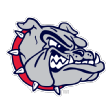
The Zags are without question the best offensive team in the country. While Gonzaga may not be quite as powerful on the offensive end as last year, this team is close. The difference lately has been the emergence of Chet Holmgren, who has improved on both ends and learned to play seamlessly with Drew Timme. Gonzaga leads the nation in effective field goal percentage (60.2%) and 2-point field goal percentage (62.2%). By comparison, Gonzaga led the nation in those categories last season at 61% and 63.9%. Not too shabby. And this year the West Coast Conference is tougher than ever, yet the Zags are blowing people out. This is a Final Four team again.
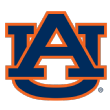
The Tigers lead the nation in playing hard. What separates Auburn from the crowd is defense. Due to two absolute interior stalwarts in Walker Kessler and Jabari Smith, Auburn covers up the rim from 10 feet and in. Kessler is the best shot-blocker and shot-changer in the country, and Smith isn’t far behind. Add in Dylan Cardwell, and you have the rim fully protected. Auburn is subject to the same “off shooting night” as any team, but its defense and paint capabilities will keep the Tigers in games regardless. This group can cut down the nets in New Orleans.
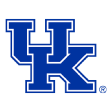
When healthy, Kentucky is as good as anyone. Even after a loss to Tennessee, this holds up as one of the best and most balanced offensive teams in the country, and a formidable defensive team that effectively guards the 3-point line. But, Kentucky does not win without Oscar Tshiebwe. He has been the national player of the year to this point. Tshiebwe leads the Wildcats in scoring, blocked shots, steals, field goal percentage, and he leads the nation in rebounding and offensive rebounding. The rebounding is simply astounding. The easy thing to say, and it is almost cliche, is that Tshiebwe gives greater effort than anyone else. That short-changes him. He does give great effort, and he has unusual talent and aptitude for rebounding, but he is the nation’s best rebounder largely because he is incredibly intelligent in his positioning. Some of that comes from Bob Huggins, but Tshiebwe has an uncommon understating and study of where the ball is likely to come off of the rim. As long as Tshiebwe is healthy and plays, Kentucky is legit.
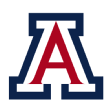
Tommy Lloyd’s Wildcats are the second-best offensive team in the nation next to Gonzaga. Arizona is an excellent passing and cutting team, almost like a European pro team. Arizona is also a good offensive rebounding team and excellent defensive team. The only area where Arizona does not excel is long-range shooting, yet Bennedict Mathurin, Kerr Kriisa and Pelle Larsson can all drill it.
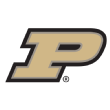
Early in the season, Purdue looked like the best team in the country, and can still prove to be. Offense isn’t a problem, as Purdue scores from multiple spots with relative ease, and shoots over 40% from deep as a team. But the Boilermakers’ defense has not yet been special. If Purdue, which boasts the best wing in the nation in Jaden Ivey, does not improve on the defensive end, the Boilermakers will be vulnerable to an upset. There is no team out there that Purdue cannot beat, but the list of teams that can beat Purdue is longer than it should be.
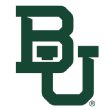
6. Baylor Bears
The Bears are not as good as they were last year. But, a healthy Baylor is in the top tier of teams this year, and is undefeated with a full roster. When players are out with injury, Baylor has been beaten a few times — witness Wednesday’s loss to a tough Texas Tech group — which showed how the recent injury to Jonathan Tchamwa Tchatchoua could cripple Baylor’s chances to repeat as national champion this season. Baylor has very good guards, and can really get the offensive rebounds. Without “Everyday Jon,” who can switch off on any position and guard effectively, Baylor may have to go small at times, and there will be more responsibility on Flo Thamba to play more minutes and be more productive. Yet, with Kendall Brown and Jeremy Sochan, Baylor has the size and versatility to play small ball and still win at a high level.

The über talented Blue Devils have lost four games by a combined total of 9 points. It takes a great effort to beat Duke, and the Blue Devils could have won each of the games they lost. Paolo Banchero is the fantastically skilled matchup nightmare, but the revelation has been AJ Griffin, who put up 27 points at North Carolina, and has been among Duke’s best players and shooters over the past month. Duke has six players that have hit 24 or more threes, with Griffin and Trevor Keels leading the way. Duke is ranked in the top 20 in both offensive and defensive efficiency, and is the No. 1 offensive rebounding team in the ACC.
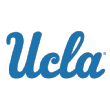
8. UCLA Bruins
The Bruins started the season at No. 2, and rightfully so. Despite some losses, which every team has suffered, UCLA is still a legit contender, ranking in the top 20 in both offense and defense, something only nine teams can claim. One thing that sets UCLA apart is taking care of the ball. UCLA rarely turns the ball over, and has multiple playmakers and scorers. Last year, UCLA raised its game in the postseason, and reached a Final Four. This year, the Bruins are capable of more. The key will be defense, as UCLA ranks 6th and 9th in field goal percentage defense and three-point percentage defense in the Pac-12, respectively.
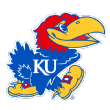
As stated before, this is not Bill Self’s most talented team, but this is a true team that Self has gotten the most out of. Kansas isn’t in the top tier identified above, but close to it, and capable of beating any team in that tier when the Jayhawks are at their best. The headliner of the Jayhawks is Ochai Agbaji, who has been magnificent all season long. But, the unsung hero of this Kansas team is Christian Braun, who has put up consistent, versatile numbers all year. Braun is sixth in the Big 12 in scoring, 13th in rebounding, 13th in assists and fourth in blocks, as a guard. He is a strong finisher and a tough defender. He is an All-Big 12 player.
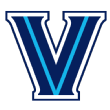
How does Jay Wright do it? Villanova looks small out there, and there seem to be areas to exploit. Yet the Wildcats keep winning. It is amazing. Of course, having Collin Gillespie and Jermaine Samuels back as super seniors helps, as does the fact that Villanova is the best free throw shooting team in the nation, but it is much more than that. Villanova plays winning basketball all of the time, in practice, shootarounds, games and in recovery. The Wildcats play both ends of the floor, and rank in the top 10 in offensive efficiency and in the top 30 in defensive efficiency. Villanova is really good, but not in the highest tier of contenders. But does anyone discount the Wildcats’ chances to win four in a row in March and contend? No.
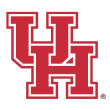
11. Houston Cougars
If you didn’t think Kelvin Sampson was a Hall of Fame coach before top players Marcus Sasser and Tramon Mark went down with season-ending injuries, you should rethink it now. Houston has continued to win when winning seemed impossible after losing their best player, yet Sampson adjusted. The Cougars have gone inside more, and nobody is complaining about playing time. Josh Carlton is averaging close to 15 points on over 60% from the floor since Sasser went down. He has been fabulous. It seems like Houston will fall short of contending for it all, but the fact that the Cougars are still in the top-20 is amazing.

If any team is capable of cracking the top tier of contenders, it is Illinois — even after the Illini struggled against a hot Rutgers team on Wednesday. With Kofi Cockburn inside, anything is possible. Cockburn is unstoppable without sending multiple defenders at him, and with a healthy Andre Curbelo in the lineup, one has to love the Illini’s chances. Keep an eye on Alfonso Plummer, the transfer from Utah. The lefty is a deadeye shooter who is aptly named. When the Plummer shoots it, it is drained. He is averaging nearly 15 points on 40% from deep and 90% from the foul line.

I absolutely love this Friars team, although I am deathly afraid of the Providence mascot. It haunts my dreams. The team, however, is rather dreamy. Older than the Boston Celtics, the pieces all fit. Nate Watson is the workhorse, Jared Bynum is the playmaker, Al Durham is the orchestrator that lives at the foul line and Justin Minaya is the defensive engine that fuels the team. Every player seems to embrace his role and star in that role, while Ed Cooley makes us all feel better about the game. Don’t be surprised to see Providence in the Final Four for the first time since 1987, when Rick Pitino and Billy Donovan shocked the hoop world.

The Vols have been playing better in February — Tuesday’s win over Kentucky was comprehensive — and have looked like a team that could contend for a second-weekend spot. The news that Olivier Nkamhoua was lost for the season hit hard, however. Nkamhoua, the junior big man from Finland, is one of Tennessee’s most versatile defenders and rim-protectors, and one of its best percentage three-point shooters. There is still plenty of talent (Jonas Aidoo played really well on Tuesday in extended minutes), but the loss of Nkamhoua hurts, and hurts badly. Tennessee can still force turnovers and make opponents play below their level, and Santiago Vescovi is still one of the best guards in the country. Josiah-Jordan James, who has played hard and defended well throughout, has started to make shots again. James is averaging nearly 15 points over his last five games, and put up 20 on South Carolina and 18 on Mississippi State.
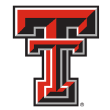
The Red Raiders guard people, and lead the Big 12 in field goal percentage defense, holding opponents to 44.3% from 2 in a rough and tumble league. What will hold the Red Raiders back, if anything? Perimeter shooting and turnovers. Bryson Williams has been a revelation. Williams has been very good all season, but he has been an All-American against Kansas, scoring 33 and 22 in the two games against the Jayhawks. If the two teams meet in the Big 12 tournament, guess who will be at the top of the KU scouting report?
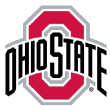
The Buckeyes’ offense is a pleasure to watch, and E.J. Liddell has been truly special all season. Ohio State can score with anyone, and they run great sets. But, can Ohio State beat the best with a defense ranked outside of the Top 100 of the efficiency ratings? Short-handed without Justice Sueing, the Buckeyes are still formidable, and Malaki Branham is a future star. Branham went to the same high school as LeBron James, and busted out against Nebraska for 35 points, then followed that up with other worthy performances like 20 points against Purdue, 24 against Northwestern and 19 against Rutgers. Branham is a long armed, explosive wing that will be a star in Columbus. You can see the confidence building and the ability to validate it.

17. Texas Longhorns
The Longhorns are an interesting case study. Chris Beard brought in several leading scorers from different teams to form one team in Austin, and expectations were high. But, those expectations were ours, not necessarily Beard’s. Beard was realistic and confident. He did not project his team as top 5 at the beginning of the year, we did that. And, we were overly enthusiastic. Texas is good, especially on the defensive end. The Longhorns are physical, contest everything and are simply no fun to play against. Texas forces turnovers with the best of them, ranking in the top 10 in making opponents cough up the ball and turning defense into offense. One player to watch is Timmy Allen, the transfer from Utah who was All-Pac 12 for the Utes (“Did you say Utes?”). Allen moves without the ball as well as any player in the game, and is in constant motion on the floor. When there is a drive, he cuts hard and intelligently, and his mid-range game is terrific. He is a model of how to play off the ball and move without it.

Even amid a difficult stretch of basketball (the Spartans are just 4-5 in their past nine games). I am a believer in Michigan State, and I think Tom Izzo is one of the greatest coaches of all-time, in any sport. Can the Spartans do something special in March? Yes. However, the turnover issue is confounding, and continues to be the only way Michigan State can fall short of the top teams. Sparty turns it over on one out of five possessions, and there is no pattern to it. Michigan State can shoot it, protect the rim and get out in transition. There are quality players at every position. Yet the one thing that constantly dogs Michigan State is throwing the ball away. Michigan State is 13th in the Big Ten in turnover margin. Yikes.

19. UConn Huskies
The Huskies have talent at the key spots: point guard, wing and interior. UConn defends well, protects the rim with Adama Sanogo and Isaiah Whaley, and can offensive rebound, getting more than 38% of its misses. Sanogo, R.J. Cole and Tyrese Martin make UConn a tough out. UConn can get to an Elite Eight and win there, or UConn can get bounced in the second round. After an up-and-down February, UConn needs to make a stretch run. UConn is 2-6 versus Quad 1 teams on the season.

20. Iowa Hawkeyes
While we have been crushing North Carolina for only having one Quad 1 win, guess which team among the top 20 has zero? It’s Iowa, which is 0-5 against the upper-tier teams. What makes Iowa special? Its offense, which never turns the ball over, and Keegan Murray, who leads the Big Ten in scoring at 23 points per game, and is third in rebounding and field goal percentage. Murray is a lottery pick in the NBA draft, and will have a great NBA career. He is the most improved player in the country.

21. USC Trojans
The Trojans are 3-1 versus Quad 1 teams and 5-2 versus Quad 2 teams. The win over UCLA was impressive. Isaiah Mobley was unavailable, and Rice transfer Drew Peterson torched the Bruins for 27 points, 12 rebounds and 5 blocks in a virtuoso performance against a crosstown rival. Is USC as good as last year? No. Is USC capable of beating just about anyone? Yes.
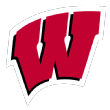
As usual, Wisconsin is taking care of the ball, turning it over on only 12% of its possessions, second in the nation to Iowa. Wisconsin has a superstar in Johnny Davis, who went off for 37 against Purdue and averages over 25 points against ranked teams, and a tough competitor and shooter in Brad Davison, who is among the Big Ten’s most productive 3-point shooters. A key performer for Wisconsin is Tyler Wahl, who is the Draymond Green of the Badgers. A shaky-shooting Wisconsin has nine Quad 1 wins after beating Indiana on Tuesday and has won 10 Big Ten games for the 19th time in the last 21 years. Same old Badgers…hard to beat because they don’t beat themselves. Wisconsin is 12-1 in games decided by 6 points or fewer, and has played a really difficult schedule.
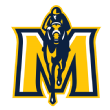
Everybody knew Ja Morant, and rightfully so. He was a supernova, and one of the great college players of all-time. But Tevin Brown was overshadowed, and not given his due. Brown has hit 72 threes after 23 games, and has hit over 300 in his career. Brown also has over 1,700 career points, almost 600 career rebounds, almost 400 assists and close to 150 steals. He is a baller. And, he is not alone. KJ Williams is a 6-10 forward that averages over 17 points and almost 9 rebounds, and put up 39 on Tennessee State. His last two games, Williams is averaging 30 points and 9 rebounds. Nobody should want a piece of Murray State in the NCAA tournament.

24. Wyoming Cowboys
They may have fallen Tuesday night at New Mexico, but Jeff Linder’s Cowboys are legit, and play to their best players’ best attributes. Wyoming does not play through analytics. The Cowboys throw the ball into the post, where Graham Ike does his damage. Ike averages 20 points and 9 rebounds, and spends a ton of time at the foul line. His perimeter counterpart, Hunter Maldonado, is a downhill wing that spends just as much time at the foul line and finishes plays around the rim, shooting 57% on 2-point attempts. Drake Jeffries can loosen up defenses with his 3-point shooting, hitting 60 threes on 41% behind the arc. Wyoming has three Quad 1 wins, and five Quad 2 wins. This is a good offensive team.
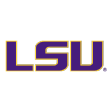
25. LSU Tigers
The Tigers have lost 6 of 10, but remain the best defensive team in the SEC. LSU ranks No. 1 nationally in adjusted defensive efficiency, but labors to score. LSU is 5-4 versus Quad 1 teams and 5-2 versus Quad 2 teams. They can defend with the very best, but defense alone never wins championships. In the end, the offense will determine the ending for this team. Score efficiently, LSU can beat anyone, but don’t, and almost anyone can beat the Tigers.
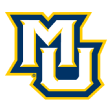
Justin Lewis‘ decision to return to Marquette this season gave a huge boost to Shaka Smart in his first year in Milwaukee. Lewis — who was injured for a large portion of the home stretch a year ago — has been a revelation, a Big East Player of the Year candidate (and potential first-round NBA draft pick) for a 17-9 team headed to the NCAA tournament. The Baltimore native was magnificent in a home-and-home sweep of Villanova, combining for 40 points and 16 points.

Xavier has been up and down in Big East play — Wednesday’s loss to St. John’s hurt — but it would be wise to watch out for a junior- and senior-dominated team that has a bunch of quality wins to its credit this year. Paul Scruggs and Jack Nunge are a good outside-inside scoring combo for a team that generally takes good care of the basketball (No. 1 in turnover percentage in Big East play).
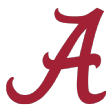
Alabama slipping from SEC champion to closer to the middle of the league pack has not been about just one thing, but perimeter shooting has to be high on the list of culprits. The Tide led the SEC in 3-point shooting (37.8% in league play a year ago), a number that has this season dipped below 30%. For a team with six players that have taken 57 or more 3s, that’s a problem. Alabama is still a dangerous team, one that has a chance to do some damage against Kentucky in Lexington on Saturday.

Seton Hall is another one of those really experienced Big East teams that has been inconsistent but could be a major handful when it matters. Jared Rhoden is a consistent scorer from the wing, and the Pirates will get a huge lift whenever Bryce Aiken is able to return from recent concussion issues that have sidelined him.
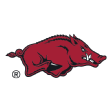
As evidenced by its thrilling overtime victory over Auburn in Fayetteville, the Razorbacks can be really special when they’re clicking on both ends of the floor. Arkansas is 10-1 in its last 11 games and is capable of beating anyone, especially when guard JD Notae is filling it up. Notae terrorized Auburn with 28 points — he likes the big moments.

Loyola is in a dogfight at the top of the Missouri Valley, and the league would probably prefer that the Ramblers — who are headed to the Atlantic 10 next season and a solid bet for an at-large anyway — don’t win it. Whatever happens, this is the Valley’s best bet to advance in the NCAA tournament, with fifth-year senior Lucas Williamson and a group that ranks in the national top-15 in both 2- and 3-point percentage a very dangerous first-weekend opponent.

Saint Mary’s is generally judged in relationship to Gonzaga in the WCC, and the Gaels (74-58 losers in Spokane last Saturday) will get one more crack at the Zags when they visit Moraga on Feb. 26. But don’t let whatever happens there define Randy Bennett’s team. The Gaels have good wins over the likes of Notre Dame and Oregon outside of the conference, and a solid matchup problem in the paint in 6-10 Estonian big man Matthias Tass (12.9 PPG, 6.2 RPG).
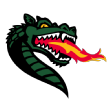
33. UAB Blazers
The Blazers look like they will be in the NCAA at-large discussion — and rightly so — but Andy Kennedy’s team must play better away from Birmingham. Recent losses at Marshall and Old Dominion are not helping the case. What is helping the case is the play of Jordan Walker, the former Seton Hall and Tulane guard who erupted for 42 points against Middle Tennessee on Feb. 5. Walker would be fun to watch in the NCAA tournament, but UAB needs to get there first.

The relentless effort you saw on Tuesday night at Cameron Indoor Stadium was typical of this Wake Forest team, and in fact, any Steve Forbes-coached team. This group, which trailed by 19 at around the 15-minute mark, came all the way back and tied the game late before a stunned Cameron Crazies crowd, only to fall just short. Alondes Williams (19.8 PPG, 6.8 RPG, 5.1 APG) does a little bit of everything for a Deacs group that already has 20 wins and will be dancing for the first time since 2017.
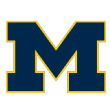
Reports of Michigan’s death have been greatly exaggerated. The Wolverines destroyed Purdue, a potential Final Four team, in Ann Arbor last Thursday before falling to Ohio State in a tough turnaround on Saturday. This team doesn’t have the veteran pieces that led last year’s No. 1 seed, but when Hunter Dickinson (18.1 PPG, 8.2 RPG), Eli Brooks (12.3 PPG) and freshman Caleb Houstan (10.2 PPG) are all making shots — the trio was a combined 12 of 16 from 3 against the Boilermakers — they can and they will beat you.

36. Oklahoma Sooners
The key metrics still favor Oklahoma reaching the NCAA tournaments despite an unsightly 4-9 Big 12 record that has included a bunch of heartbreaking losses. The Sooners can still reach the field, but the winnable games left on the schedule — starting with Saturday’s trip to Iowa State — must start breaking the right way. Big 12 teams are shooting 34.3% against OU from 3, which gives the Sooners the worst 3-point defense in the league.
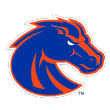
Boise State leads a Mountain West Conference that has been really tough near the top this season, and the fact that the Broncos are a senior-dominated team — starting with forward Abu Kigab (13.9 PPG, 6.3 RPG) — is a mark in their favor. But BSU is going to be vulnerable in close games until further notice, because they do not shoot it well from the free-throw line. The 63.6% mark there is one of the worst in the entire country, though it’s been slightly better in MW play.

The Dons have 21 wins and a couple of golden opportunities left to improve their résumé — starting on Thursday night at Saint Mary’s and then when Gonzaga comes to town in a week. Guard Jamaree Bouyea (17.9 PPG, 5.1 RPG) is in the conversation, along with guys like Collin Gillespie (Villanova) and Hunter Maldonado (Wyoming), as one of the nation’s best fifth-year seniors who has played his career at only one school.
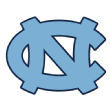
North Carolina certainly didn’t look like an NCAA tournament team against Pittsburgh on Wednesday night in Chapel Hill, and the various metrics systems and bubble observers will surely account for the defeat. But it’s also worth remembering that UNC was 6-1 in its previous seven games before falling to Pitt, and remains a talented team with a lot to recommend it. Brady Manek and Caleb Love can both hit a 3, and Armando Bacot is an all-ACC pick and one of the finest rebounders in the country. The Heels have another opportunity for a quality win on Saturday at Virginia Tech.

CSU has weathered a rugged Mountain West and positioned itself for the NCAA tournament after falling just short a season ago. Luckily for Niko Medved’s team, the toughest remaining games — Wyoming and the encore of last Sunday’s classic against Boise State — are both in Fort Collins. Junior David Roddy is climbing NBA draft boards thanks to a solid all-around game (19.3 PPG, 7.1 RPG, 3.1 APG) that is not what some might expect from his 6-foot-5 and 252-pound frame.

41. SMU Mustangs
Though they fell in close fashion at Temple on Wednesday, Tim Jankovich has one of the most experienced teams in the country, a senior-dominated group that also happens to be very good. The Mustangs’ win over Houston on Feb. 9 was no fluke. Kendric Davis (19.1 PPG, 4.8 APG) can get his shot and also distribute along with the best players in America.

42. Belmont Bruins
Like Murray State, Belmont is on its final tour in the OVC before joining the Missouri Valley Conference next season. Also like Murray, Belmont is a team no one is going to want to face in March. The Bruins have won eight in a row, and they shoot a blistering 60.6 from inside the arc — second in the nation. Center Nick Muszynski (16. 2 PPG, 5.3 RPG) is a matchup problem who is capable of hitting a 3 at 6-foot-11.

43. Oregon Ducks
The Ducks are one of the nation’s true mystery teams, but if there’s one thing you know about Dana Altman-coached teams, it’s that they tend to peak near the end. That would be especially handy for a team that has some damaging losses (Arizona State and Cal at home, BYU by 32 points) on its profile. A three-game stretch starting Saturday against Arizona, UCLA and USC ought to be telling.

SDSU is tough, and is in the midst of a really important three-game stretch against quality Mountain West opponents that started with a win over Utah State Tuesday and continues with Fresno State (Saturday) and Boise State (Feb. 22). The Aztecs’ catalyst is Cal transfer Matt Bradley, who adds value in all facets but has been particularly good lately from distance (31 of 60 from 3 in league play, 51.7%).
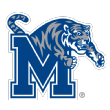
45. Memphis Tigers
A young Memphis team had its struggles early, but Saturday’s decisive win in a tough environment at Houston showed this group is figuring it out just in time. The Tigers shoot it well (53.2% effective field goal percentage, best in the AAC) and are committed to rebounding (35.9% offensive rebounding percentage, No. 2 in the league), a formula that fuels a lot of winning.
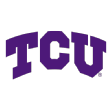
46. TCU Horned Frogs
The Horned Frogs are an NCAA tournament-quality team but the rugged Big 12 schedule will do them no favors. TCU still must play Kansas twice, Baylor and Texas on the road, and Texas Tech in Fort Worth. There will be no faking their way into the field of 68, and Mike Miles (14.8 PPG, 4.0 APG) will give Jamie Dixon’s group a chance.
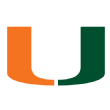
47. Miami Hurricanes
Miami is a first-division ACC team with some strong wins (at Duke, at Virginia Tech, at Wake Forest) and a lot to recommend it, but it is also running out of chances to impress the selection committee in what has been a top-heavy ACC. The Canes have guards who can score — Charlie Moore, Kameron McGusty, Isaiah Wong — which tends to be a problem when the games matter most in March.
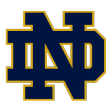
The Fighting Irish might look like a bubble team to the rest of the world, but a closer look reveals a team with a very legitimate shot to win the ACC title. The Irish (12-3 and tied for first in the ACC with Duke) have five games left, four against teams that will probably not be in the NCAA tournament, as well as a critical road date at Wake Forest this Saturday. Guard Blake Wesley (14.2 PPG) is one of the underrated freshmen in the country and a future NBA player.

49. Indiana Hoosiers
It’s been a rough February for Mike Woodson’s group thus far, with a five-player suspension for a team curfew violation and a lingering foot problem for guard Rob Phinisee helping fuel an 0-4 record this month. This remains a good team however, one that plays hard on the defensive end but needs someone to help Trayce Jackson-Davis (18.0 PPG, 8.3 RPG) share the offensive load from night to night.

Davidson can shoot the basketball. The Wildcats are ranked in the top 25 nationally from inside the arc (55%), outside the arc (38%) and the free-throw line (77.5%). Given that putting the ball in the basket is the object of the game, that bodes extremely well for the A-10 leaders. This is another veteran team, with international imports Hyunjung Lee (15.8 PPG, 6.2 RPG) and Luka Brajkovic (14.9 PPG, 7.3 RPG) meshing well with Michigan State transfer Foster Loyer (16.5 PPG, 3.5 APG).
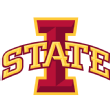
The margin for error remains razor-thin in the Big 12 — this is the only league in the country where a team of Iowa State’s quality could be sitting near the bottom of the conference at 4-9. Guard Izaiah Brockington (17.2 PPG, 7.7 RPG) has continued to play well but the Cyclones — allowing Big 12 opponents to shoot a league-worst 53.8% from 2 — have to punch things up on the defensive end.
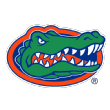
52. Florida Gators
The Gators got handled by a surging Kentucky team on Saturday and fell to a desperate Texas A&M group Tuesday night, but are going to have multiple good opportunities to build confidence heading into the postseason. Auburn (Saturday), Arkansas (Feb. 22) and Kentucky (March 5) will all be visiting Gainesville in the coming weeks, a chance for Colin Castleton (15.5 PPG, 9.2 RPG) to prove he’s healthy and capable of leading UF on a late-season run.

53. BYU Cougars
BYU seems to have righted the ship following its four-game losing streak — the Cougars have won their last two — and need some momentum heading into the WCC tournament in Las Vegas. Mark Pope’s team can make a deep run in Vegas if Alex Barcello (33 points, including 9-of-10 from 3 in Saturday’s win over Pepperdine) continues to fill it up and the team takes care of the basketball.
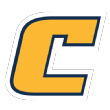
54. Chattanooga Mocs
The Mocs are not going to have life easy in what is always a gauntlet of a Southern Conference tournament, but are positioned well to win the regular season title in a good league. Wing Malachi Smith (20.4 PPG, 6.5 RPG) has been the best player in the conference, and Silvio De Sousa (11.5 PPG, 6.9 RPG) has been a positive contributor when healthy.
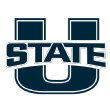
The Aggies have ridden the rollercoaster a bit in Ryan Odom‘s first year in Logan, but are capable of beating anyone in the Mountain West — and winning next month’s conference tournament in Las Vegas. Justin Bean (18.4 PPG, 9.9 RPG) is one of the most dynamic players in the country, with 16 straight double-digit scoring outings and nine double-doubles over that stretch.

It’s been a strange year for a Virginia team that beat Duke at Cameron, handled top-10 Providence, but also had some vexing losses (James Madison, Navy) on its résumé. The Cavs will need to finish strong to make the field. As UVa fans know well, the outside shooting has been a consistent problem. The Cavs are shooting just 30.8% from 3 in ACC play, way down from 39.1% a year ago. The Cavs’ defensive efficiency rank is also its worst in over 10 years — not a great formula for Tony Bennett’s squad.
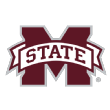
57. Mississippi State Bulldogs
The Bulldogs have gone just 2-7 during a difficult nine-game stretch of basketball, but the schedule gets more manageable for Ben Howland’s squad down the stretch. There is another good résumé-building opportunity at home against Auburn (March 2) left on the docket. Iverson Molinar (18.6 PPG, 3.9 APG) is one of the SEC’s underrated players.

Kansas State sits at a very respectable fifth in the crucible that is the Big 12, with a 4-1 record in its last five games and some opportunities to boost its standing. Bruce Weber’s group plays at Kansas and at Texas Tech before February ends, and will need to channel the energy it summoned in previous road wins against Texas, TCU and Iowa State. Nijel Pack (43.6% on 75 made 3s) is one of the nation’s underrated sharpshooters.

After falling to 10-10, 2-7 in the ACC on Jan. 26, Virginia Tech’s prescription said the Hokies couldn’t lose any more winnable games. So far, the prescription has been filled. Tech has won six in a row heading into a home date with North Carolina on Saturday that will be important for both teams. Keve Aluma continues to be a real handful — he scored 24 points on 10-of-14 shooting in Monday’s win over Virginia. The Hokies have also shot it really well from 3 (41%), including 40.8% in ACC play.
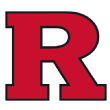
Make that four straight wins over 2022 NCAA tournament locks for the Scarlet Knights — Michigan State, Ohio State, Wisconsin and Illinois have all fallen to Rutgers in a 12-day span. If it comes down to it, the selection committee will have to decide how much weight to put behind ugly losses to Lafayette and UMass that can’t just be brushed aside. But before that, Steve Pikiell and Co. have some work to do: at Purdue, at Michigan, Wisconsin and at Indiana are the next four. If it navigates that gauntlet, put Rutgers safely in the field.
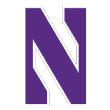
Northwestern is another team in the Index that has done some good things, just not quite consistently enough. The Wildcats won at Michigan State and have taken down Rutgers and Indiana in February, but are running out of opportunities to impress. Chris Collins’ group takes good care of the basketball but remains in the bottom half of the Big Ten in all the key shooting metrics.

The Billikens remain a player in the Atlantic 10 race, and if they can be consistent enough in the next few weeks to reach the NCAA tournament, look out. Travis Ford’s squad gave Auburn everything it could handle back on Dec. 18, actually leading by 13 at the 8-minute mark of the second half. Yuri Collins (11.2 PPG, 8.3 APG) is one of the finest distributors in the country.

63. Iona Gaels
The Gaels are headed for their first MAAC regular season title under Rick Pitino, and will be the clear favorite to emerge from Champ Week and represent the league in the NCAA tournament for the sixth straight event. They can win a game once there — they beat Alabama this season and also gave the Crimson Tide all they could handle in the first round last year. Nelly Junior Joseph (13.0 PPG, 8.1 RPG) is difficult to deal with in the paint at 6-foot-9, 240 pounds.

Anybody want to face the Mean Green in March? UNT is 16-1 since back-to-back losses to Kansas and Miami back in November, and this is also the program that took down Jaden Ivey, Zach Edey and Purdue in the NCAA tournament last March. Conference USA opponents have not figured out the outside-inside duo of point guard Tylor Perry (13.5 PPG, 2.6 APG) and undersized power forward Thomas Bell (12.8 PPG, 6.9 RPG).

65. Dayton Flyers
The Flyers’ win over Kansas on Nov. 26 remains their calling card, but this group also has a chance to be peaking at the right time. UD will face Richmond and Davidson in their final two regular season games, and both could have something to say about who wins the Atlantic 10 title. DaRon Holmes II (11.3 PPG, 5.8 RPG), the 6-10 freshman, has played his best basketball in A-10 play and has been great around the rim (66% from 2).

Washington State has lost three straight and is going to need a big weekend in Los Angeles to further its NCAA case. The Cougs, who last reached the tournament when Tony Bennett was the coach in 2008, face UCLA Thursday night and USC on Sunday. WSU is active on the defensive end, leading the Pac-12 in turnover percentage (22.8) and opponents’ 3-point percentage (28.3) against league foes, but struggles to shoot it (league-worst 43.8% from 2 in conference play).
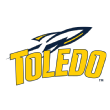
67. Toledo Rockets
The MAC tournament is going to be tense, with multiple teams — include Ohio U., Kent State, Buffalo and Akron in any list you make — capable of cutting down the nets in Cleveland. But The Bilastrator is highest on the Rockets out of that group. They swept current conference leader Ohio in a home-and-home and have a talented, versatile guard in Ryan Rollins (19.5 PPG, 6.2 RPG).
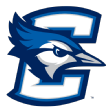
The various rankings are not that high on the Bluejays, even though Creighton has a bunch of nice wins (Villanova, UConn, Marquette) and leads the Big East in defensive efficiency in conference games. The good news for Greg McDermott is that UConn, Marquette and Seton Hall all still have to come to Omaha, and he has a bunch of guys who can score including senior forward Ryan Hawkins (13.5 PPG, 7.4 RPG).
